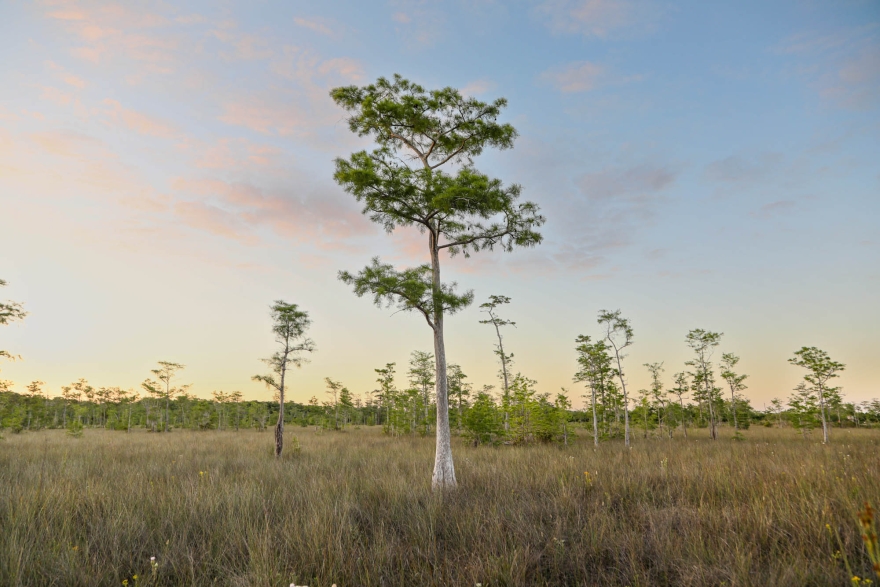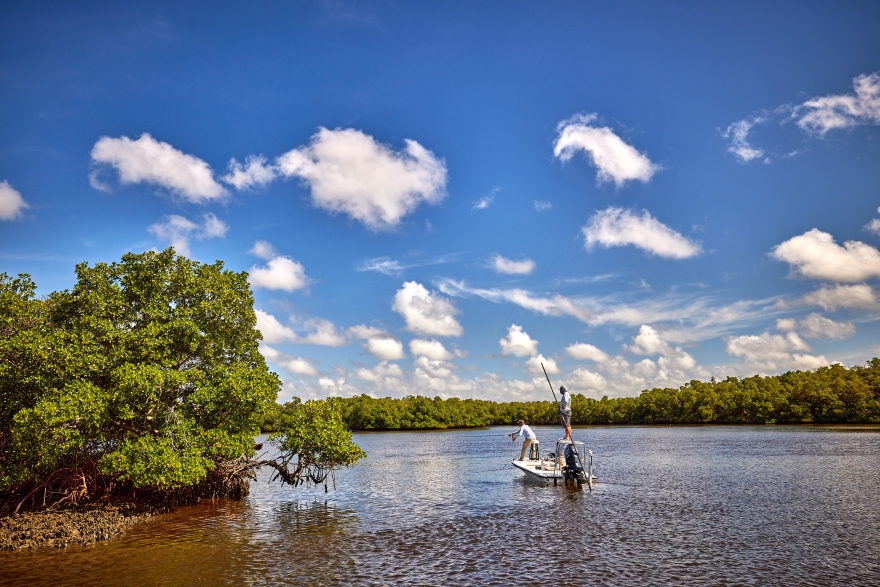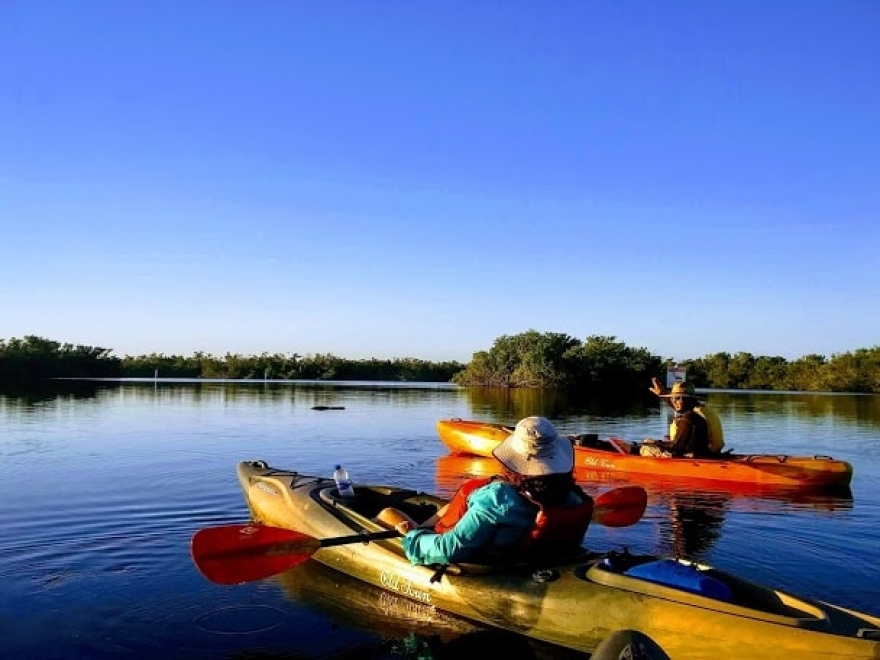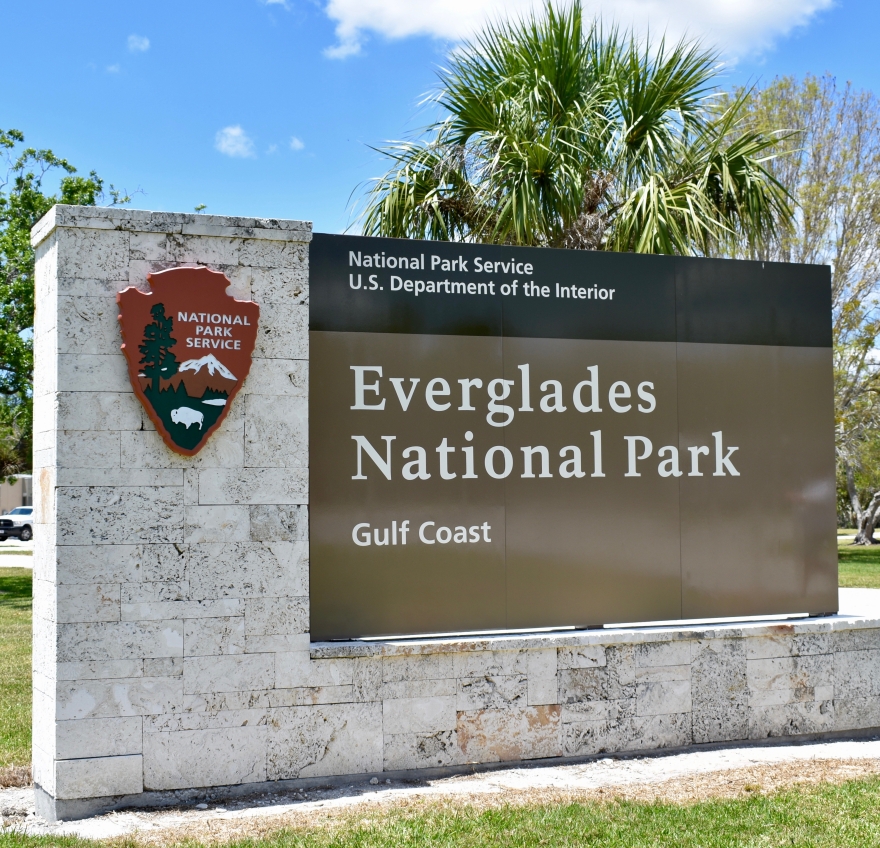Author Marjory Stoneman Douglas may have said it best: “There are no other Everglades in the world. They are, they have always been, one of the unique regions of the earth, remote, never wholly known.”
Douglas published those words in 1947 in her seminal work The Everglades: River of Grass. The book captured the public imagination with its description of the simple beauty and dizzying diversity of the Everglades. On December 6 of that year, President Harry S. Truman dedicated Everglades National Park to protect and preserve this one-of-a-kind environment.

Seventy-five years later, the Everglades invite modern-day explorers to discover the watery wilderness’s unique combination of freshwater marshlands, oak and cypress forests, and mangrove islands along with the wide variety of life that inhabits them.
Everglades National Park protects 1.5 million acres, reaching from the outskirts of metropolitan Miami to the doorstep of Florida’s Paradise Coast. One million visitors a year explore this amazing aquatic environment, whether by boat, paddleboard, bike or on foot. In the process, they learn for themselves about the “vast glittering openness,” “saltness and sweetness” and “dazzling blue heights” that drew Douglas to the Everglades.
A RIVER OF GRASS

As Douglas pointed out in her famous book, the Everglades is far from a swamp. It is actually a slow-moving river, known as Shark River Slough, that flows south and west through boundless tracts of sawgrass and empties into Florida Bay and the Gulf of Mexico.
The combination of freshwater from Shark River Slough and saltwater from the Gulf of Mexico makes the Ten Thousand Islands portion of the Everglades a fisherman’s paradise. Located about 40 minutes from Naples and Marco Island, the tidal rivers of Ten Thousand Islands teem with fish: bass, tarpon, snook, redfish, trout, permit, cobia, shark, grouper, snapper, pompano, sheepshead, triple tail, mackerel and kingfish. It’s common to catch a dozen or more species in a single trip.
The brackish water and maze of mangroves that give The Thousand Islands area its name also provide a haven for hundreds of species of creatures, from shrimp and crabs to dolphins and manatees. The Everglades are an important stopover for birds during their annual migrations, making the park a birder’s paradise as well. The Everglades is also the only place on the planet where alligators and crocodiles live side-by-side.
EXPLORING THE EVERGLADES

By far, the best way to explore the Everglades is by boat and there are endless options for doing that. Airboat tours introduce you to a uniquely Floridian way of exploring the shallow tidal rivers with a local expert at the helm. Fishing charters offer expert-led expeditions in near-shore or offshore waters, each with its own collection of tales to share with the folks back home.
Renting a kayak, canoe or standup paddleboard gives visitors a way to discover the Everglades from water level and at their own speed. Paddlers might cross paths with a pod of dolphins chasing dinner or a manatee quietly munching sea grass. Just pay attention to the tide, which can shift quickly in the channels that thread among the islands.
‘NOTHING ANYWHERE IS LIKE THEM’

At the southern end of the park – about three hours from Naples — Everglades National Park’s visitors center at Flamingo puts visitors deep into the heart of the River of Grass. Flamingo offers two campgrounds along with a wintertime “glamping” alternative known as eco-tents that come with wooden floors, beds, and a view of Florida Bay.
Flamingo’s refurbished lodge, which will reopen with the rededication, offers 24 studio, one- and two-bedroom units, all with kitchens, as well as a 145-seat restaurant with waterfront views of Florida Bay.
Following a stunning sunset over Florida Bay, Flamingo’s remote location lets visitors set aside their daily concerns while pondering Douglas’ description of the Everglades: “Nothing anywhere is like them.”
